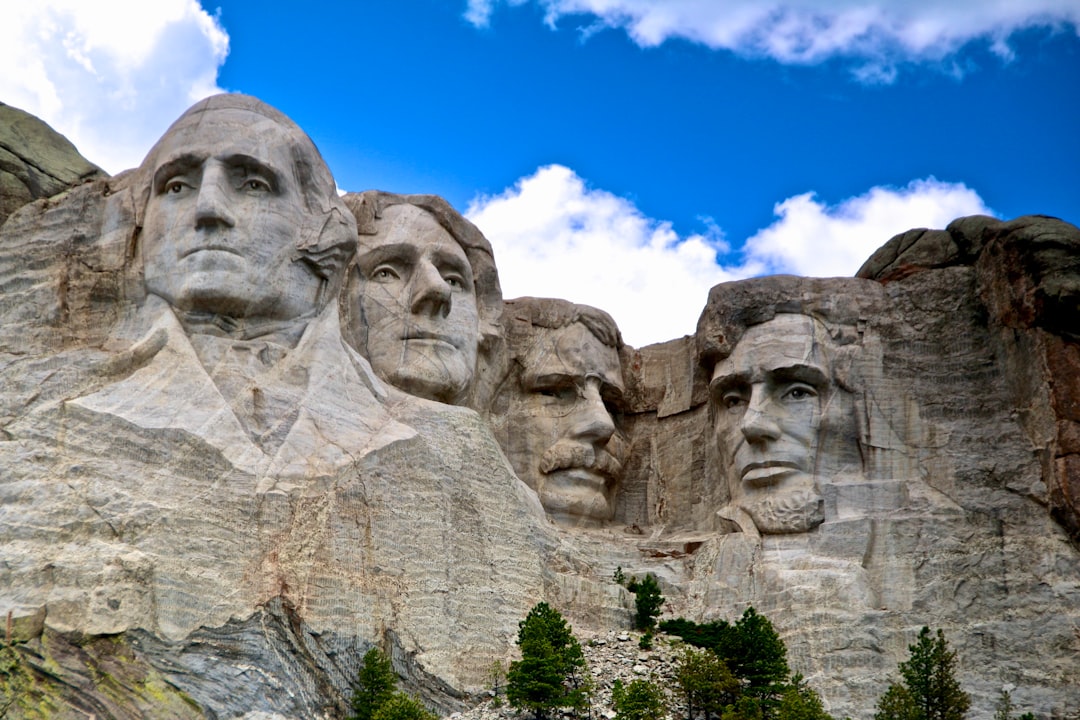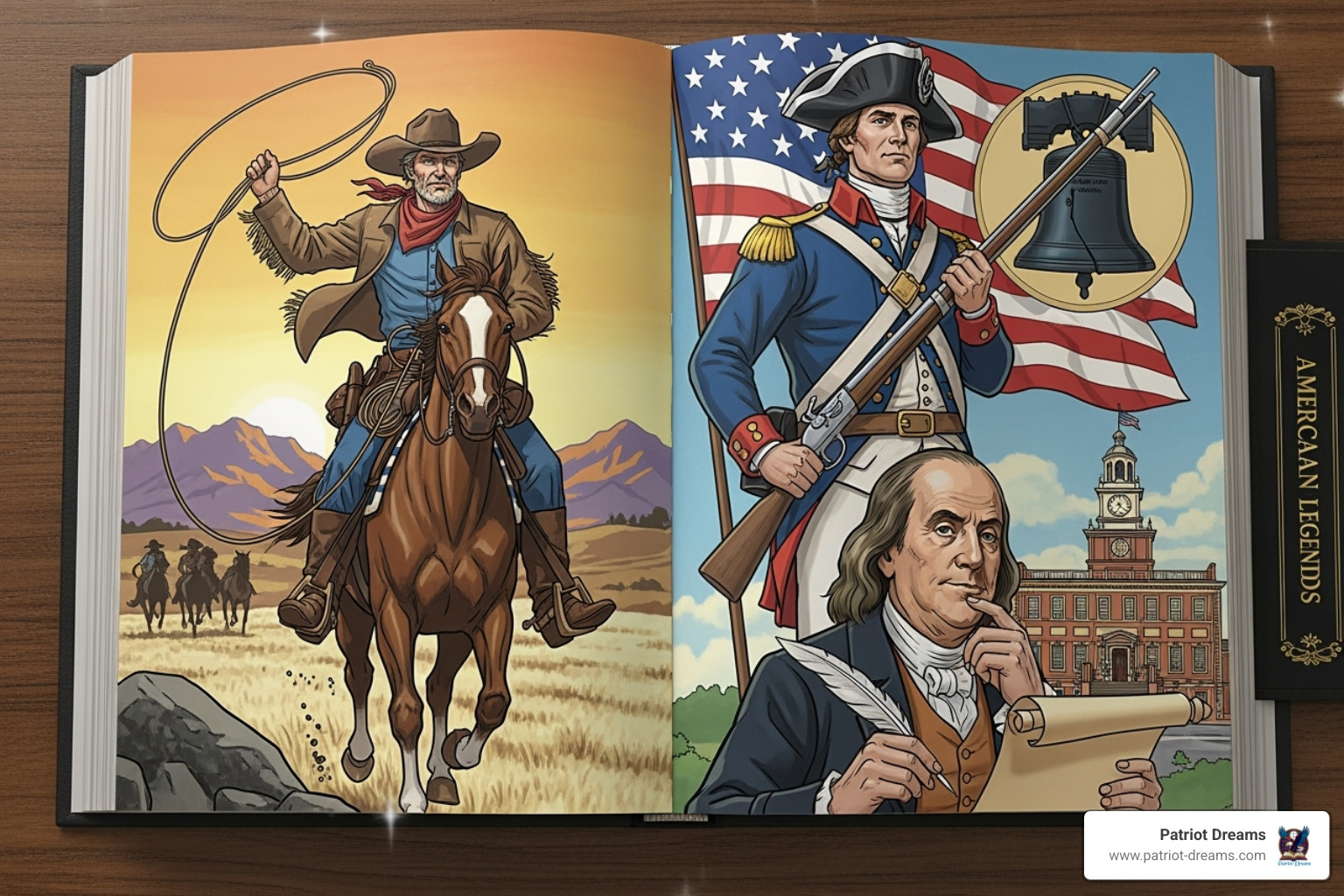Thomas Jefferson and the Declaration of Independence: How a Nation Found Its Voice
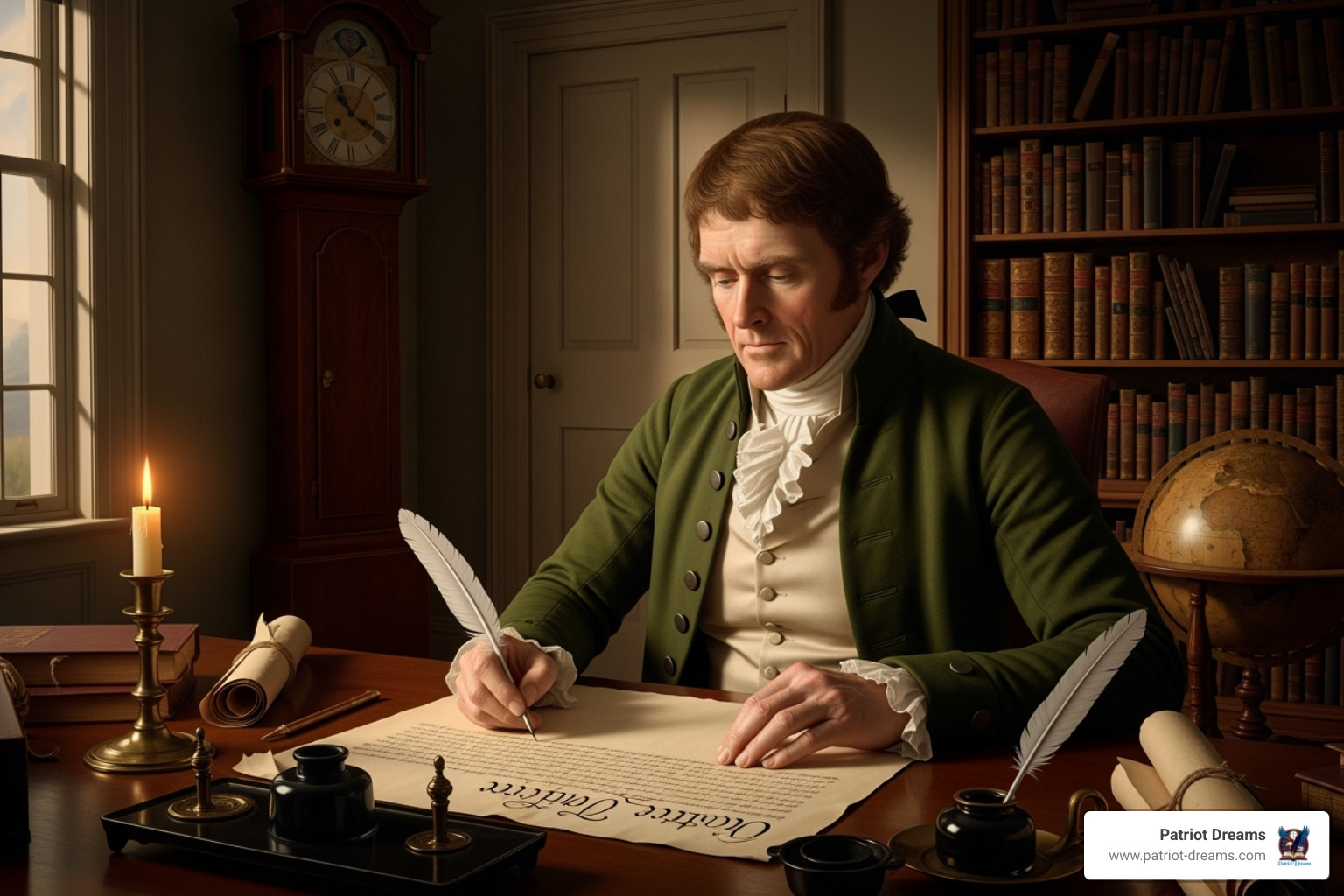

How America's Founding Document Gave Birth to a New Nation
Thomas Jefferson and the Declaration of Independence: How a Nation Found Its Voice represents one of history's most pivotal moments—when thirteen separate colonies transformed into a unified nation with a clear moral and political identity. In the summer of 1776, a 33-year-old Virginia lawyer drafted words that would echo through centuries, articulating not just a break from Britain, but the philosophical foundation of American democracy itself.
Here's how Jefferson and the Declaration created America's voice:
- The Principal Author: Thomas Jefferson drafted the Declaration between June 11-28, 1776, as part of the Committee of Five
- The Collaborative Process: John Adams, Benjamin Franklin, and the Continental Congress made crucial revisions to Jefferson's "original Rough draught"
- The Core Message: "All men are created equal" with "unalienable Rights" to "Life, Liberty and the pursuit of Happiness"
- The Final Adoption: July 4, 1776, when 56 delegates eventually signed the document that declared American independence
- The Lasting Impact: The Declaration became the philosophical blueprint for American governance and inspired freedom movements worldwide
When Jefferson wrote that governments derive "their just powers from the consent of the governed," he wasn't just explaining why America should be free from British rule. He was defining what it meant to be American—an idea that power belongs to the people, not kings or nobles.
The Declaration did more than list 27 grievances against King George III. It gave voice to Enlightenment ideals that had been brewing in colonial minds, changing abstract philosophy into concrete political action. As Jefferson later reflected, the Declaration was meant to be "an expression of the American mind."
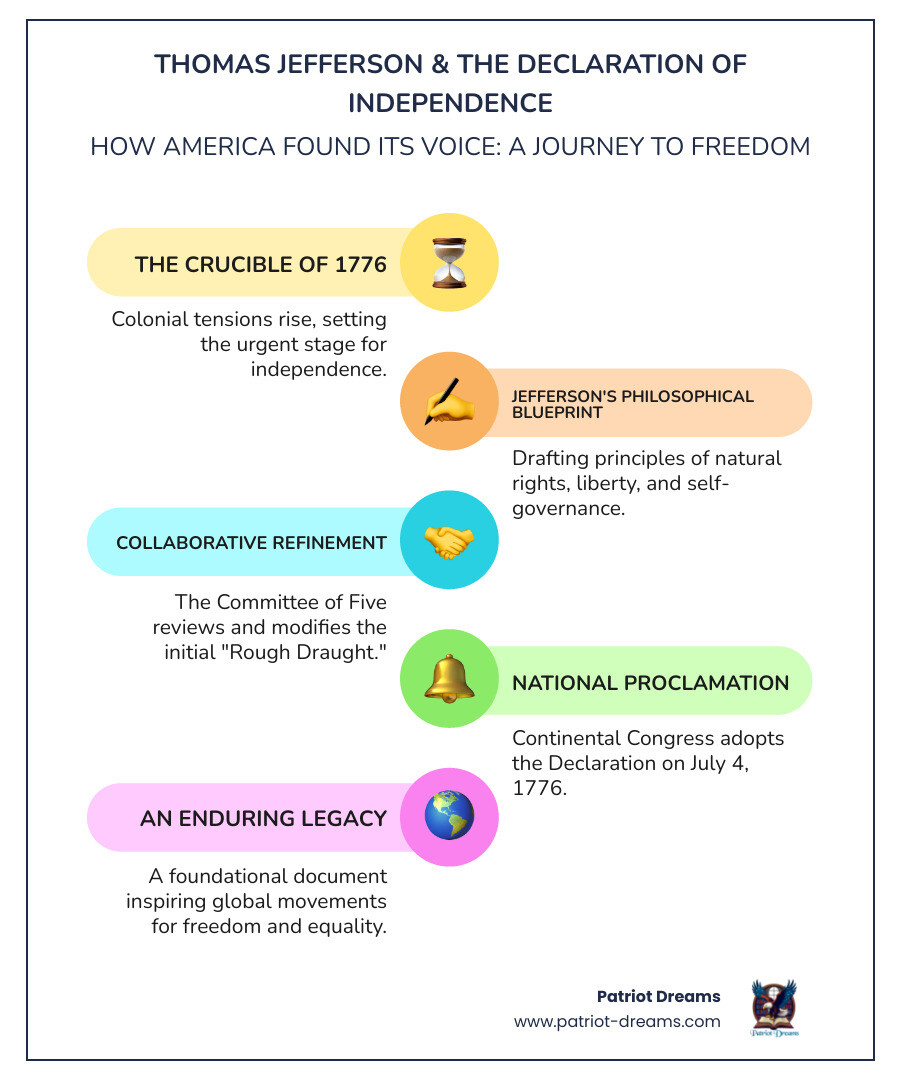
The Political Crucible of 1776: Setting the Stage for Independence
By 1776, the relationship between Great Britain and its American colonies had reached a breaking point. Disagreements over taxes had escalated into a fundamental clash over the right to govern.
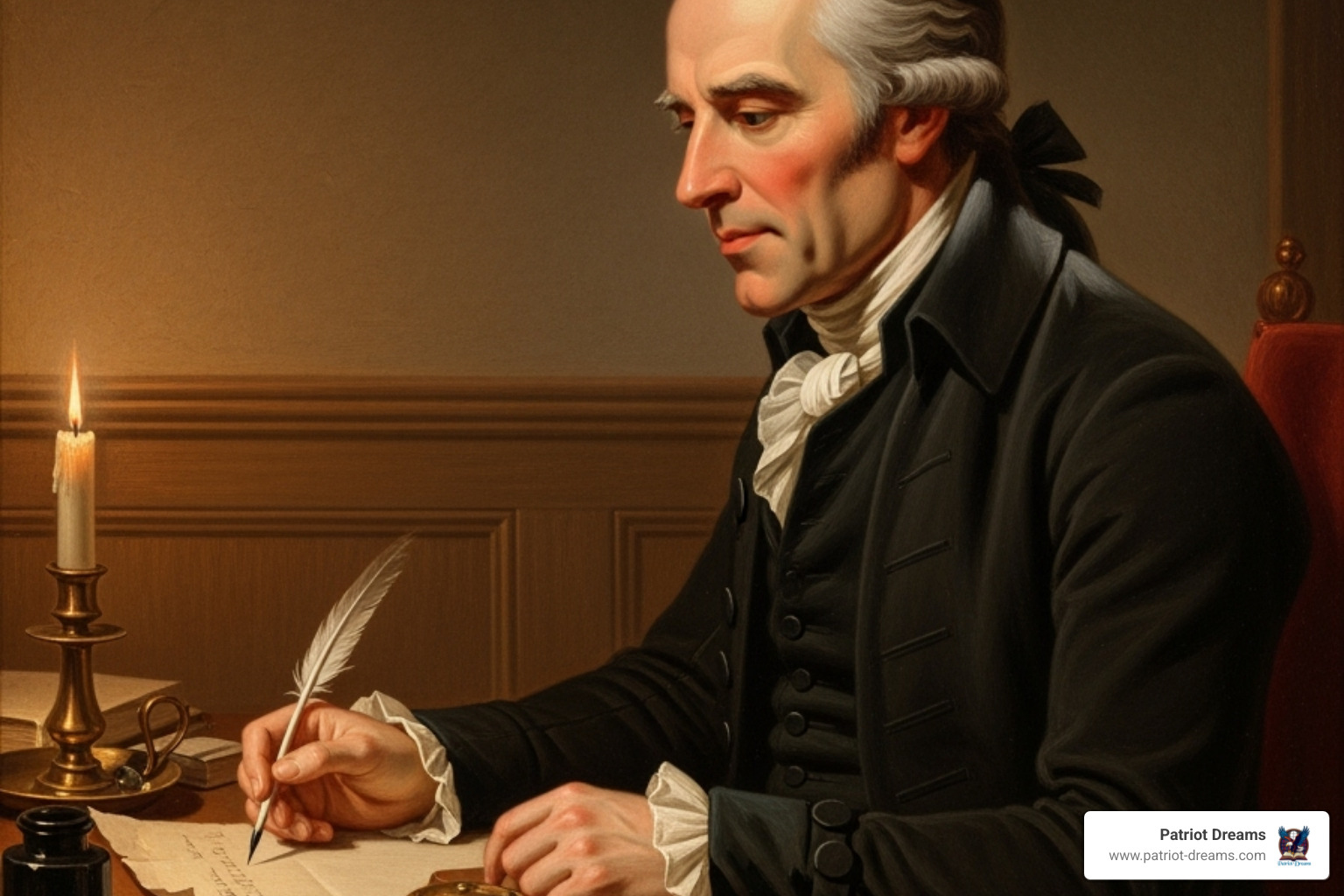
For over a decade, tensions had been building. The colonists, who considered themselves British subjects, simply wanted their rights respected. But King George III and Parliament seemed determined to tax them without representation.
The political atmosphere was electric. Across the colonies, Americans debated a once-unthinkable question: Should they break away from the British Empire entirely?
The Grievances Against the Crown
The colonists had tried petitions, boycotts, and diplomatic appeals, but each protest was met with harsher measures from London.
Taxation without representation became the rallying cry, but the problems went deeper. The Stamp Act taxed everything from newspapers to playing cards. The Quartering Act forced families to house British soldiers in their homes.
The Intolerable Acts were the final straw. These punitive laws, passed after the Boston Tea Party, put Massachusetts under military rule, closing Boston Harbor and dissolving its legislature.
King George III wasn't just ignoring complaints; he was actively making things worse. He was obstructing justice by refusing to let colonies establish courts, dissolving legislatures that opposed him, and inciting insurrections by encouraging enslaved people and Native American tribes to attack colonists.
The text of the 1775 king's speech made it clear that Britain saw the colonies as being in open rebellion and demanded total submission.
The Call for a Final Break
Even with these grievances, many colonists hesitated. The Middle Colonies—New York, New Jersey, Pennsylvania, Maryland, and Delaware—were particularly reluctant, fearing war and economic chaos.
Then, Thomas Paine's "Common Sense" arrived in January 1776. Paine wrote in plain language, calling King George III a "royal brute" and asking why an island should rule a continent. His pamphlet spread like wildfire, shifting public opinion toward independence.
John Adams and other advocates knew they needed to win over the hesitant middle colonies, especially Pennsylvania. On June 7, 1776, Richard Henry Lee of Virginia introduced the Lee Resolution to the Second Continental Congress: "These United Colonies are, and of right ought to be, free and independent States." The stage was set for the Declaration of Independence.
The delegates knew they were committing treason, but the unifying force of shared grievances was stronger than their fear. America was ready to speak as one nation.
"An Expression of the American Mind": Jefferson's Philosophical Blueprint
With the Lee Resolution sparking heated debate in Congress, the delegates knew they needed more than just a simple statement of independence. They needed a document that would explain to the world why America deserved to be free. So they appointed a "Committee of Five" to craft this monumental declaration.
The committee included some of the brightest minds in Congress: John Adams, Benjamin Franklin, Roger Sherman, Robert R. Livingston, and Thomas Jefferson. But when it came time to pick the principal author, they chose the youngest member—a 33-year-old Virginia lawyer who had a gift for turning complex ideas into beautiful, powerful words.
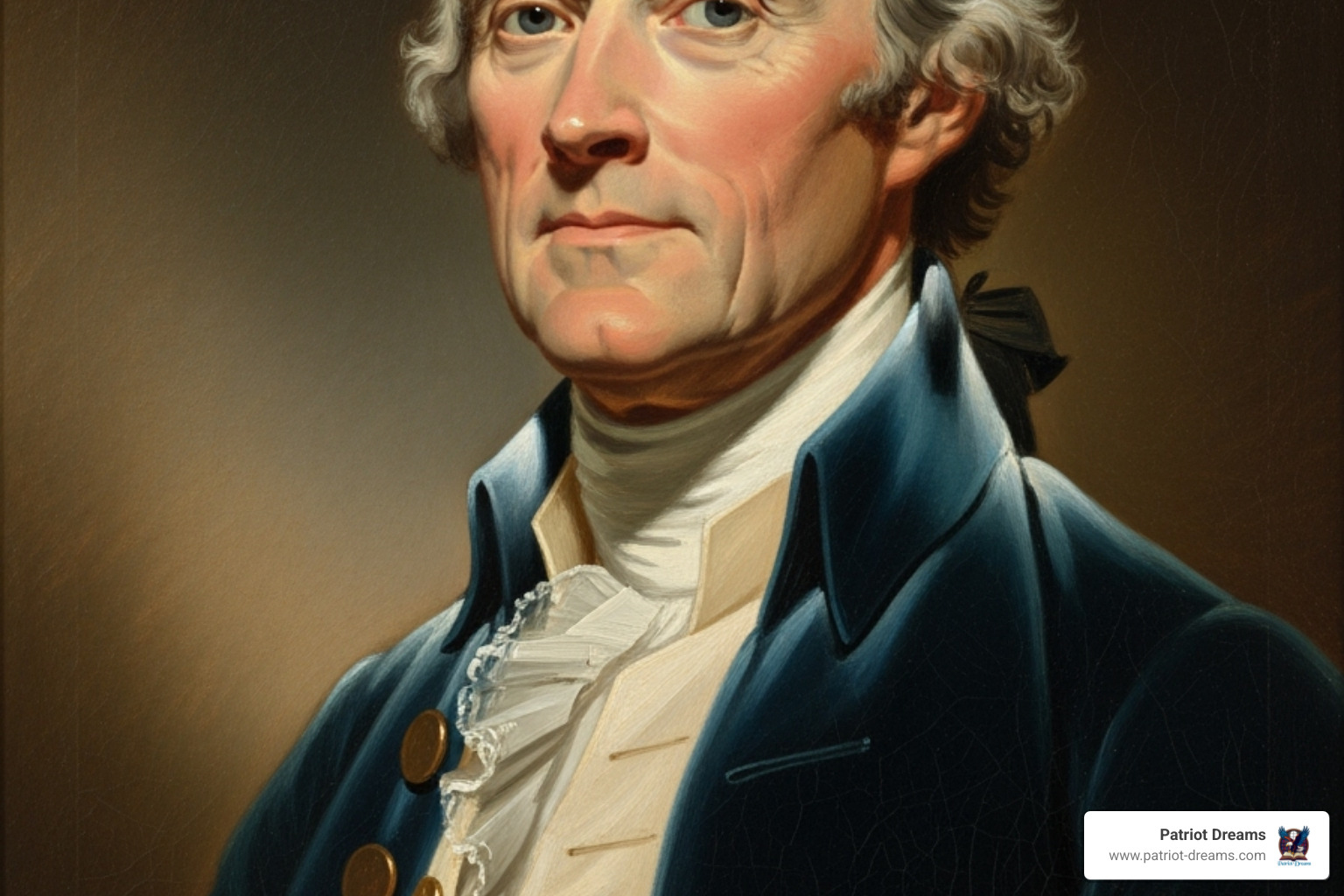
Jefferson understood his assignment perfectly. He wasn't supposed to invent brand-new political theories or come up with concepts. Instead, his job was to capture what Americans were already thinking and feeling—to put into words the shared beliefs that had been growing in colonial hearts and minds for years.
As Jefferson later explained, the Declaration was meant to be "an expression of the American mind." He drew inspiration from the great thinkers of the Enlightenment, especially John Locke, who wrote about natural rights and government by consent of the people. Jefferson admired these philosophers so much that he once called Bacon, Locke, and Newton "the three greatest men that have ever lived, without any exception."
The Core Principles of American Governance
Jefferson's true genius showed in how he took complicated philosophical ideas and made them crystal clear. The opening lines of the Declaration remain some of the most powerful words ever written in American history.
"We hold these truths to be self-evident, that all men are created equal..." This wasn't a new idea, but putting it right at the beginning of America's founding document was absolutely revolutionary. In a world ruled by kings and nobles, Jefferson was saying that every person has equal worth.
Then came the famous phrase about "unalienable Rights"—specifically "Life, Liberty and the pursuit of Happiness." These weren't privileges that a king could give or take away. They were gifts from God that belonged to every human being. Interestingly, Jefferson changed John Locke's original trio of "life, liberty, and property" to include the "pursuit of happiness" instead. This small change opened up a much bigger vision of what people could aspire to in this new nation.
Jefferson also explained the purpose of government in terms that ordinary people could understand. Governments exist "to secure these Rights," he wrote, and they get their power only from "the consent of the governed." No more divine right of kings. No more inherited power. Government worked for the people, not the other way around.
Perhaps most boldly, Jefferson declared that people have the right to change their government when it stops protecting their rights. "Whenever any Form of Government becomes destructive of these ends," he wrote, "it is the Right of the People to alter or to abolish it." This wasn't just philosophy—it was the colonists' justification for revolution.
How a Nation Found Its Voice Through Jefferson's Pen
Jefferson didn't work in isolation. He borrowed ideas from George Mason's Virginia Declaration of Rights, which had been adopted just weeks earlier. Mason's document also emphasized natural rights and the power of the people to govern themselves.
But Thomas Jefferson and the Declaration of Independence became something much more powerful than its influences. Jefferson took all these floating ideas—from Enlightenment philosophers, from colonial declarations, from years of American experience—and wove them into one unified vision.
The Declaration transformed abstract ideals into concrete political action. It gave thirteen separate colonies a shared identity and a common purpose. For the first time, Americans could point to a document and say, "This is what we believe. This is who we are."
Jefferson succeeded in creating what the colonies desperately needed: a single, clear voice that spoke for all Americans. The Declaration didn't just announce independence—it explained the principles that would guide the new nation. It was the moment America truly found its voice, and that voice has been inspiring people around the world ever since.
From "Rough Draught" to National Proclamation: The Collaborative Effort
In a rented Philadelphia room during the sweltering June of 1776, a 33-year-old Thomas Jefferson crafted his "original Rough draught"—a passionate document that would change the world. But great historical moments are rarely the work of one person. Thomas Jefferson and the Declaration of Independence: How a Nation Found Its Voice is a story of collaboration, compromise, and the messy process of creation.
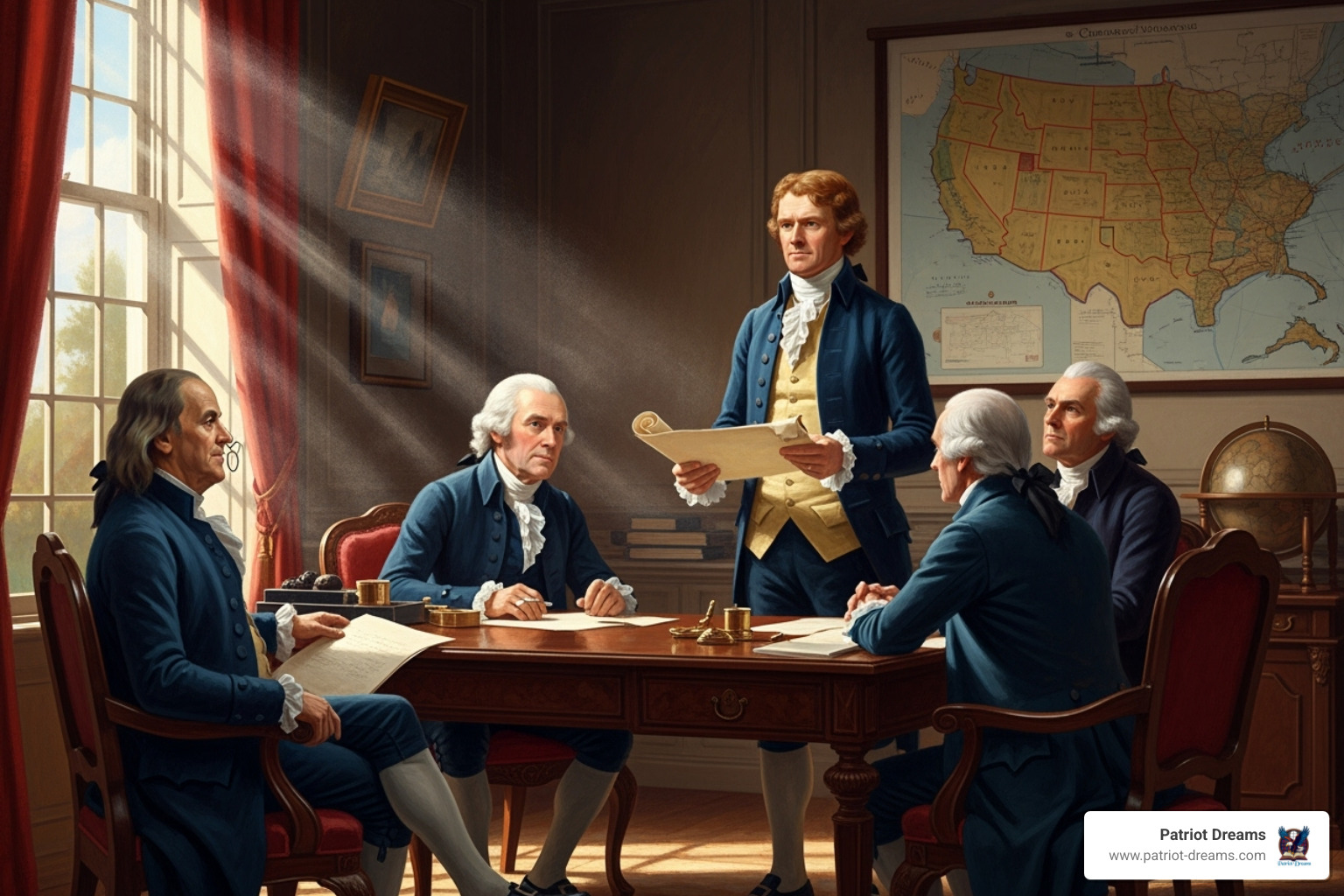
Jefferson's first draft, with its crossed-out lines, can be seen in Jefferson's "original Rough draught" of the Declaration of Independence at the Library of Congress. The Committee of Five—Jefferson, John Adams, Benjamin Franklin, Roger Sherman, and Robert R. Livingston—made the first revisions. Franklin famously convinced Jefferson to change "we hold these truths to be sacred & undeniable" to "we hold these truths to be self-evident," a crucial shift emphasizing reason over religious authority.
Then came the full Continental Congress. For two intense days, July 3rd and 4th, delegates debated the draft line by line. Jefferson, proud of his writing, reportedly squirmed as his colleagues made numerous cuts. John Adams later recalled Jefferson's pained expressions as his phrases were edited.
The Debate Over the "Execrable Commerce" of Slavery
The most significant deletion involved slavery. Jefferson's original draft included a blistering attack on King George III for forcing the slave trade on the colonies, calling it an "execrable commerce" and a violation of the "most sacred rights of life and liberty."
This powerful condemnation was removed, revealing the painful contradictions at America's founding. Southern delegates from Georgia and South Carolina, whose economies depended on enslaved labor, refused to accept it. However, Northern delegates were also complicit, as many of their merchants had profited from the slave trade.
It was a necessary compromise that left a moral stain on the document. The delegates chose unity for the sake of independence, a decision that would haunt America for generations.
The Declaration of Independence: The Final Text
Despite the edits, Jefferson's core message survived. On July 4, 1776, the Continental Congress officially adopted the Declaration of Independence. While independence was resolved on July 2nd, July 4th became Independence Day because it was when they approved the words explaining why.
That night, printer John Dunlap created copies, now called "Dunlap broadsides," for distribution. These first printings only named Congress President John Hancock and Secretary Charles Thomson.
On July 8, 1776, the Declaration had its first public reading in Philadelphia, and was soon read in town squares across the colonies. The famous engrossed parchment version was created around July 19th by penman Timothy Matlock. The formal signing ceremony took place on August 2, 1776, with John Hancock signing first with his bold signature.
Over the following months, 56 brave delegates added their names, pledging their "Lives, Fortunes, and sacred Honor" to the cause. Each signature was an act of incredible courage, and together, they created the voice of a new nation.
The Enduring Legacy: A Declaration for the Ages
The Declaration of Independence was far more than a document announcing separation. It served as a unifying force for the newly formed United States, providing a common set of ideals and a shared justification for their struggle. Its language, particularly the assertion of "self-evident truths" and "unalienable Rights," articulated the core principles of American governance and the rights of citizens, becoming the bedrock of American identity.
Today, the original engrossed Declaration of Independence is on display at the Rotunda at the National Archives Museum in Washington D.C., a powerful symbol of our nation's founding.
The Declaration's Impact on American History
The impact of the Declaration of Independence on American history is immeasurable. Its ideals have been invoked countless times throughout our nation's story, shaping movements for justice and equality:
- Abolitionist movement: The inherent contradiction between the Declaration's assertion that "all men are created equal" and the existence of slavery was evident from the start. Abolitionists, like Frederick Douglass, powerfully used the Declaration's principles to argue against slavery, highlighting the nation's hypocrisy and calling for it to live up to its founding ideals.
- Abraham Lincoln: During the Civil War, President Abraham Lincoln famously invoked the Declaration in his Gettysburg Address, re-framing the conflict as a struggle to fulfill the nation's founding promise of equality. He called it a "new birth of freedom," drawing direct lineage from the Declaration.
- Women's Suffrage: The Seneca Falls Declaration of Sentiments in 1848, a foundational document for the women's rights movement, deliberately mirrored the language and structure of the Declaration of Independence, adapting it to demand equal rights for women.
- Civil Rights Movement: Decades later, Martin Luther King Jr. stood on the steps of the Lincoln Memorial and declared that the nation had issued a "promissory note" in the Declaration of Independence, a promise that all men, black and white, would be guaranteed the "unalienable rights of life, liberty, and the pursuit of happiness." His powerful speeches, rooted in the Declaration's principles, galvanized the Civil Rights Movement.
These examples demonstrate how the Declaration has served as a moral compass, continually challenging Americans to expand the definition of "all men" and to strive for a more perfect union. It remains a dynamic document, inspiring ongoing efforts to achieve true equality and justice for all.
Thomas Jefferson and the Declaration of Independence: How a Nation Found Its Voice and Inspired the World
Beyond its immediate purpose of declaring independence, the Declaration has had an enduring legacy on human rights and democratic movements globally. It wasn't long before other nations looked to the American example.
- French Revolution: The Declaration's emphasis on natural rights and popular sovereignty profoundly influenced the French Declaration of the Rights of Man and of the Citizen in 1789, a cornerstone of the French Revolution.
- Global inspiration: The Declaration served as a blueprint for numerous other declarations of independence throughout history. Countries like Haiti (1804), Venezuela (1811), and Vietnam (1945) directly drew inspiration from or even copied sections of it. David Armitage's "The Declaration of Independence: A Global History" details this widespread influence, arguing that it created a new genre of political document.
- A model for human rights: The Declaration's assertion of unalienable rights has become a universal standard, influencing international human rights documents and movements worldwide. While the South Carolina declaration of secession in 1860 ironically misused the concept of self-determination, the Declaration's true global impact lies in its inspiration for oppressed peoples seeking liberty and self-governance.
The Declaration of Independence, therefore, transcends its specific historical context. It is a testament to the power of ideas and a guide for those striving for freedom and self-determination, a testament to how the Declaration of Independence resonated across continents and centuries.
As we reflect on these profound historical moments, we encourage you to explore more American stories on Patriot Dreams. Our platform is dedicated to bringing American history, heritage, and personal stories to life, helping you connect with the voices that shaped our nation.
Frequently Asked Questions about the Declaration of Independence
When we talk about Thomas Jefferson and the Declaration of Independence: How a Nation Found Its Voice, many questions naturally arise. These are some of the most common ones people ask about this pivotal moment in American history.
Why is the Declaration of Independence so important?
The Declaration is crucial for several reasons. It formally announced the colonies' separation from Great Britain, making America's intentions clear to the world. More importantly, it established the philosophical foundation of the United States on the principles of natural rights and popular sovereignty—the idea that governments derive their power from the "consent of the governed." This principle turned the old world order upside down. Finally, the Declaration has served as an enduring inspiration for freedom movements in the U.S. and globally, cited by everyone from abolitionists to civil rights leaders to demand the nation live up to its founding ideals.
Did Thomas Jefferson write the Declaration of Independence by himself?
This is one of the biggest misconceptions about the Declaration! While Thomas Jefferson was indeed the principal author, he definitely didn't work alone. He was part of what we call the "Committee of Five," which included some pretty impressive company: John Adams, Benjamin Franklin, Roger Sherman, and Robert R. Livingston.
The process was truly collaborative. John Adams and Benjamin Franklin offered significant input during the initial drafting phase—Franklin, for example, suggested changing Jefferson's phrase "sacred & undeniable" to the more famous "self-evident." That small change made a huge difference in how we understand these truths today.
But the collaboration didn't stop there. The wider Second Continental Congress made several revisions to Jefferson's original draft. The most significant change was removing a clause condemning the slave trade—a decision that reflected the difficult compromises needed to keep all the colonies united in their fight for independence.
Why do Americans celebrate Independence Day on July 4th?
You might think this would be obvious, but the timing is actually more complex than it first appears! Independence Day is celebrated on July 4th because that's when the Second Continental Congress officially adopted the final text of the Declaration of Independence.
Here's where it gets interesting: the resolution for independence was actually passed on July 2nd. John Adams was so sure this would be the date Americans would celebrate that he wrote to his wife Abigail predicting July 2nd would be remembered with "Pomp and Parade, with Shews, Games, Sports, Guns, Bells, Bonfires and Illuminations."
Most delegates didn't sign until much later—the engrossed copy wasn't signed until August 2nd. But July 4th marks the day the nation's founding document was approved and publicly proclaimed. It was the moment when the carefully crafted words that explained why independence was necessary were officially adopted.
That's the day when America truly found its voice, making July 4th the perfect choice for our national celebration. It solidified the date in American memory as the birthday of our nation's ideals, not just our political independence.
Conclusion
Thomas Jefferson and the Declaration of Independence: How a Nation Found Its Voice remains one of history's most remarkable stories of change. In the sweltering summer of 1776, a young Virginia lawyer put pen to paper and helped birth a nation. What emerged wasn't just a legal document announcing separation from Britain—it was something far more profound.
Jefferson's masterful draft, refined through the collaborative wisdom of his peers in the Continental Congress, became the moment thirteen separate colonies finded their shared identity. The Declaration articulated ideals that would define what it meant to be American: that all people are created equal, that rights come from our humanity rather than from kings, and that governments exist to serve the people, not the other way around.
These weren't just pretty words on parchment. They became the living voice of American democracy, echoing through every generation since. When Frederick Douglass challenged slavery, when women demanded the vote at Seneca Falls, when Martin Luther King Jr. stood on the steps of the Lincoln Memorial—they all drew strength from Jefferson's words. The Declaration gave them, and countless others, a vocabulary for freedom.
The impact spread far beyond American shores too. From the French Revolution to independence movements in Haiti, Venezuela, and Vietnam, oppressed peoples around the world have looked to Jefferson's blueprint for inspiration. The idea that ordinary people can overthrow tyrants and govern themselves became a guide of hope across continents and centuries.
Today, we're fortunate to have platforms like Patriot Dreams that bring these foundational moments to life in vivid detail. Through interactive storytelling and immersive audio experiences, we can hear the voices of 1776 as if we were sitting in that Philadelphia meeting hall. These aren't just dusty historical facts—they're the living sounds of how our nation was born.
The Declaration of Independence proves that words have power. Jefferson and his fellow founders didn't just declare independence. They declared what kind of people Americans would strive to become. That conversation continues today, and thanks to platforms preserving these stories, future generations will hear how it all began. Find the stories of American history on Patriot Dreams and find the voices that shaped our nation.
Join the Patriot Dreams Community
Download the app today and start your journey through American history and personal legacy.

Explore Our Latest Insights
Dive into stories that shape our American legacy.

